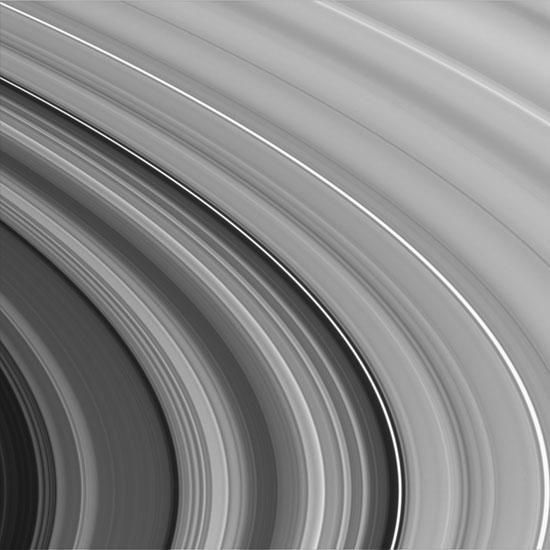Scientists sweep stodgy stature from Saturn's C ring
By Blaine Friedlander

As a cosmic dust magnet, Saturn’s C ring gives away its youth. Once thought formed in an older, primordial era, the ring may be but a mere babe – less than 100 million years old, according to Cornell-led astronomers in a study to be published Jan. 1, 2017 in the journal Icarus.
“Saturn’s rings have always challenged scientists for their provenance. Water ice comprises the bulk of Saturn’s rings, yet it is the small fraction of non-icy material – the dust the ring collects – that is valuable for clues about the ring’s origin and age,” said Zhimeng Zhang, a doctoral candidate in the field of astronomy, who led the work.
Examining data from NASA’s Cassini mission – specifically from the spacecraft’s microwave passive radiometer – the scientists learned the thermal emission characteristics of the ring. Saturn’s C ring holds mostly ice, but the ring is polluted by silicate-containing dust.
Obviously, the ice disburses little heat, but sandy space dust particles, called micrometeoroids, drift through the cosmos from the Kuiper Belt, from beyond the planet Neptune, and bombard Saturn’s rings. These micrometeoroids are ubiquitous enough to fill the expanse of space, settle on planetary rings and provide a thermal emission signature.
The detected thermal emission, Zhang said, indicates the amount of silicate content in the ring, helping scientists derive the age of the ring.
“Think of an unused desk in an unused room. The more it sits there, the more it collects dust,” Zhang said. “The C ring is the same way. While it is composed mostly of water ice, it collects silicate-containing dust from the far off Kuiper Belt. If the dust is thick on the desk’s top, then the desk has been sitting there a long time. The same is true of the C ring, and in this case, the dust – in terms of the age of the solar system – has not been here a long time.”
In addition to the Kuiper Belt dust, the researchers discovered large concentrations of non-icy material in the center of the C ring.
“We believe that the C ring has been continuously polluted by meteoroid bombardment since it first formed, and we think the middle C ring was further contaminated by an incoming Centaur, a rocky object torn apart by tides and ultimately broken into pieces and injected into the C ring,” said Zhang, who grew up in Shanghai, China, and earned an undergraduate degree at Peking University. In January, she will graduate from Cornell and start working at NASA’s Jet Propulsion Lab on the Juno spacecraft mission.
Along with Zhang, Cornell scientists on this paper,“Cassini Microwave Observations Provide Clues to the Origin of Saturn’s C Ring,” were Alex Hayes ’03, assistant professor of astronomy, and Phil Nicholson, professor of astronomy.
Media Contact
Get Cornell news delivered right to your inbox.
Subscribe